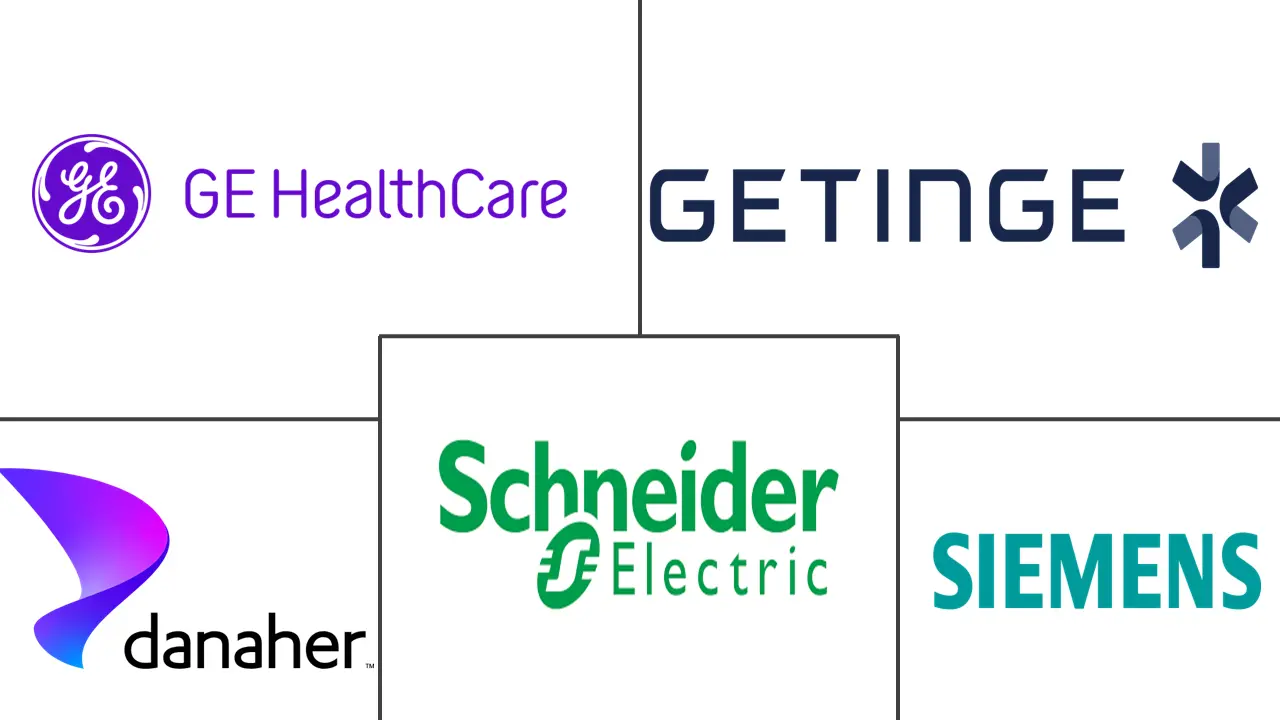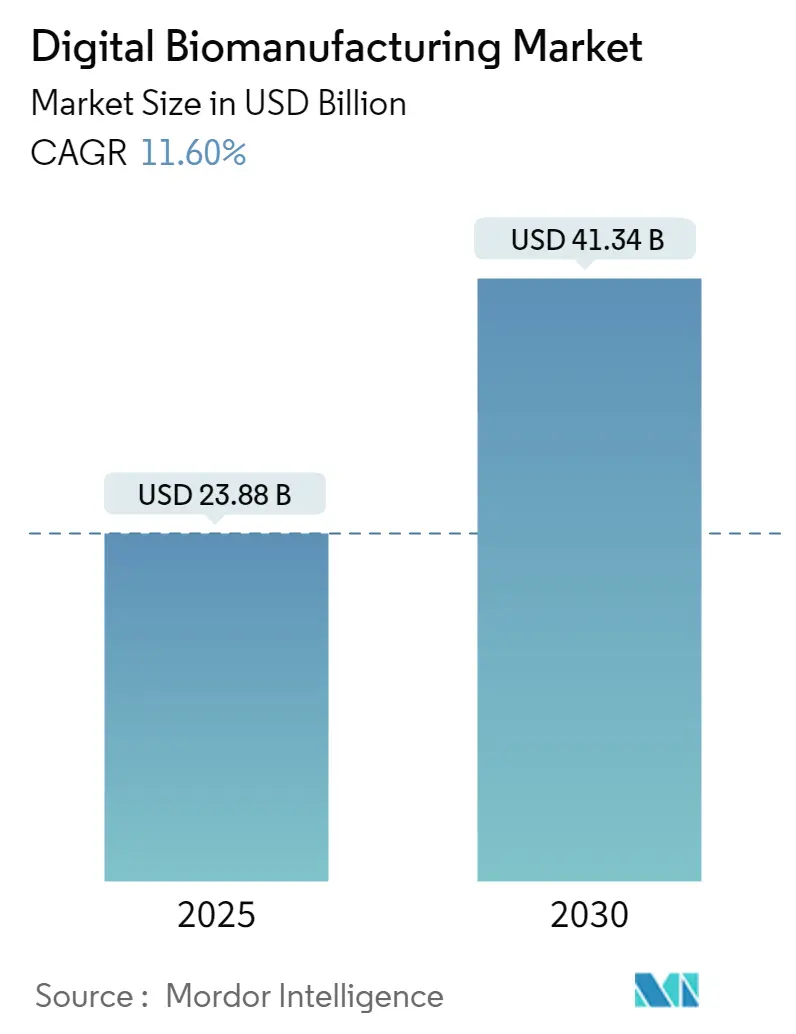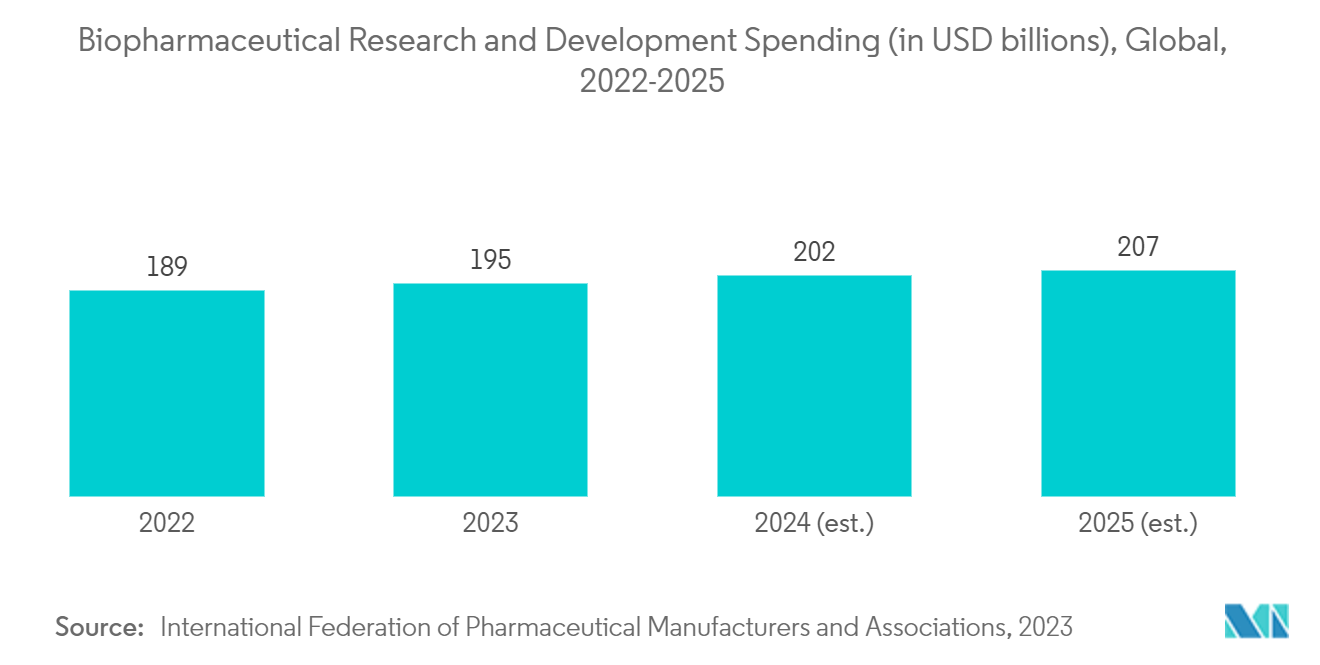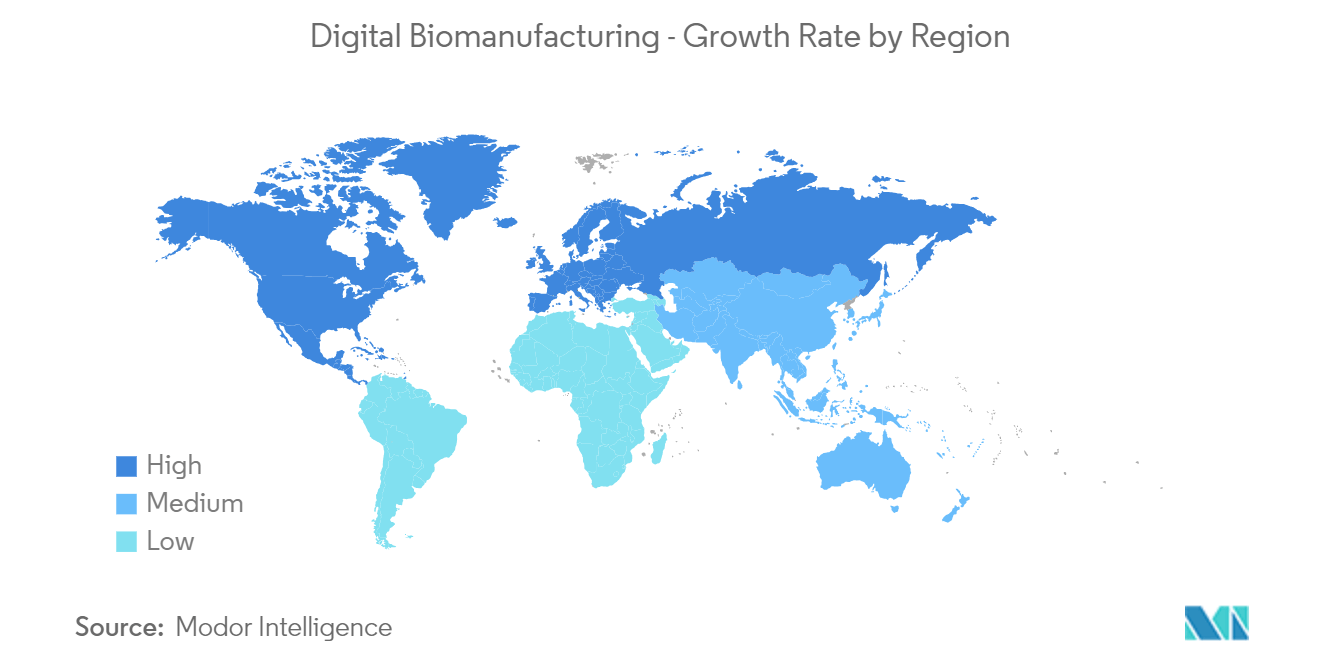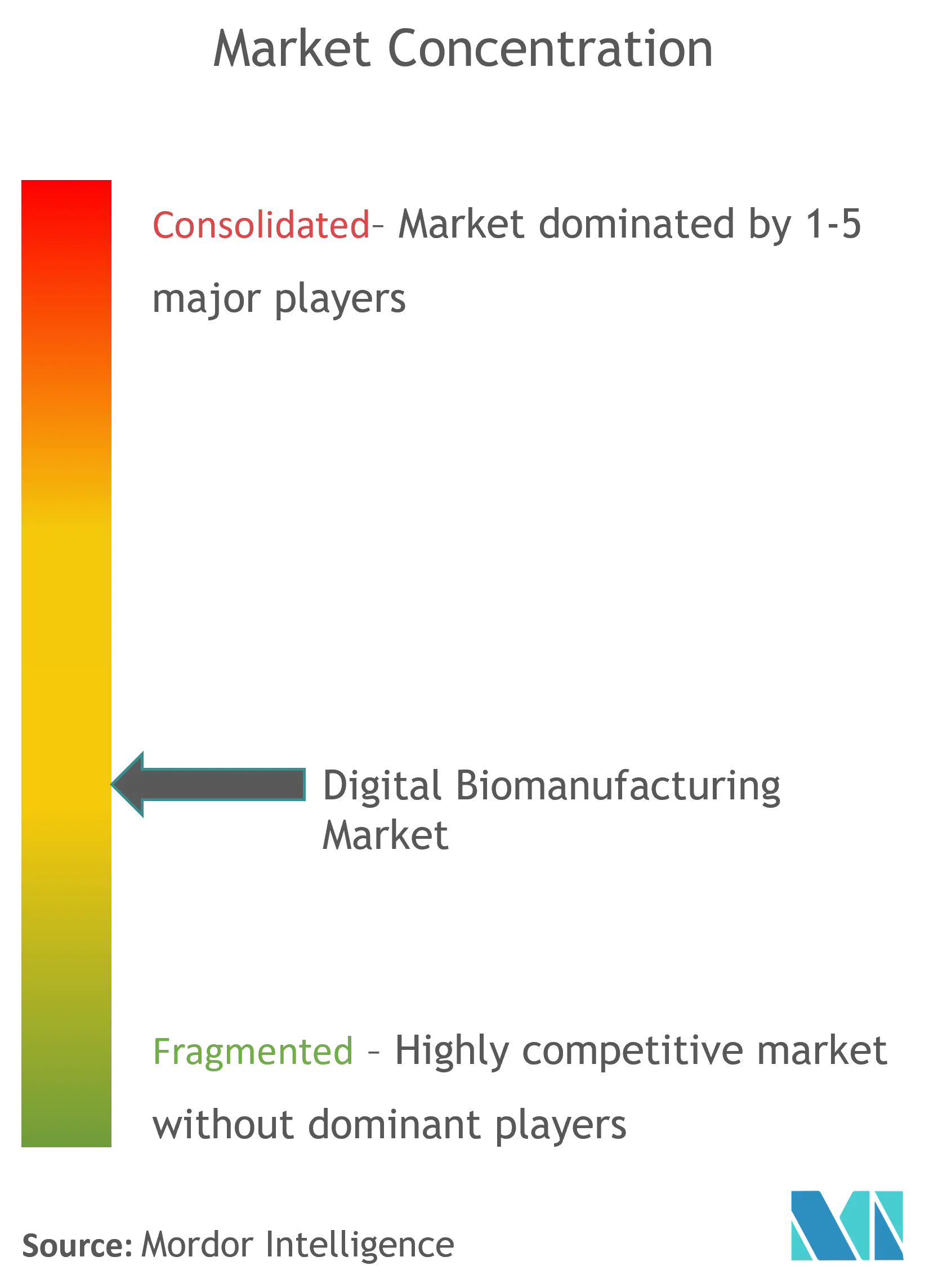Digital Biomanufacturing Market Analysis
The Digital Biomanufacturing Market size is estimated at USD 23.88 billion in 2025, and is expected to reach USD 41.34 billion by 2030, at a CAGR of 11.6% during the forecast period (2025-2030).
The major factors driving the market are the growing adoption of digital biomanufacturing, increasing biologics and biosimilar approvals, and growing demand for biologics, including vaccines, monoclonal antibodies, and gene therapies. Biopharmaceutical manufacturing involves complex and time-consuming processes for the production of high-quality biologics. Hence, to make biomanufacturing time and cost-efficient, pharmaceutical companies are adopting digital biomanufacturing to automate processes and reduce overall human errors in production. Thus, the growing adoption of digital biomanufacturing is expected to drive the market during the forecast period. For instance, in February 2024, Amgen, a biotechnology company, opened a digitally advanced biomanufacturing facility in Ohio, United States. This facility features the latest tech in assembly and final product packaging. According to a release from the local development council, the Columbus Region, this facility is expected to tackle the final manufacturing step for US injectables. Hence, the increasing adoption of digital biomanufacturing is expected to drive the market during the forecast period. Also, the increasing approvals of biologics and biosimilars increase the demand for digital biomanufacturing technologies to improve the manufacturing process by reducing the cost and time, which will drive the market during the forecast period. For instance, in November 2023, the US Food and Drug Administration (FDA) approved the Ixchiq, the first vaccine to prevent the mosquito-borne virus chikungunya. It was approved for use in adults aged 18 years and older. In December 2023, the FDA approved the Casgevy and Lyfgenia, representing the first cell-based gene therapies for the treatment of sickle cell disease (SCD) in patients 12 years and older. Casgevy is the first FDA-approved treatment to utilize a type of novel genome editing technology, signaling an innovative advancement in the field of gene therapy. Hence, the approval of biological and biosimilar products increases the demand for digital biomanufacturing technologies to improve biological products' yield and reduce human manufacturing errors. Hence, the growing adoption of digital biomanufacturing technologies and increasing approval of biologics and biosimilar products are expected to drive the market during the forecast period. However, the lack of skilled professionals to implement digital biomanufacturing solutions is expected to restrain the market during the forecast period.
Digital Biomanufacturing Market Trends
The Process Analytical Technologies Segment is Expected to Show Significant Growth During the Forecast Period
Process analytical technologies ensure quality in biopharmaceutical manufacturing by monitoring and controlling processes in real-time. It utilizes analytical tools to develop manufacturing processes accommodating material and equipment variability. By using this technology, critical process parameters (CPPs) impacting essential quality attributes (CQAs) are identified to develop analytical methods for real-time monitoring biopharmaceutical manufacturing. The increasing expansion of process analytical laboratories to optimize biomanufacturing is expected to drive the market during the forecast period.
For instance, in March 2023, the Cell and Gene Therapy Catapult (CGT Catapult) reported opening a new laboratory in Stevenage, United Kingdom. This process analytical technologies laboratory is expected to provide an analytically and digitally enabled space for cell and gene therapy developers to ensure the quality of the products is controlled and retained as they prepare to scale up production. Hence, such expansion is expected to increase the accessibility of digital biomanufacturing solutions and drive the market during the forecast period. Also, the increasing demand for the quality of biological products is expected to increase the adoption of process analytical technologies for continuous monitoring of biopharmaceutical manufacturing, which will ultimately drive the market during the forecast period.
For instance, according to an article published in the Wiley Journal in April 2022, the implementation of continuous manufacturing for biological processes producing protein-based drug molecules, such as monoclonal antibodies (mAbs), is facing several new hurdles. However, the improved process understanding through better predictive capabilities enabled by process analytical technologies is solving this problem efficiently to improve the overall production of monoclonal antibodies production. Hence, the increasing adoption of PAT to improve the overall quality of biological products is expected to drive the market during the forecast period.
North America is Expected to Hold the Largest Share of the Market During the Forecast Period
The geographical analysis of the digital biomanufacturing market shows that North America holds a significant market share in the global market. This is due to the increasing investments in the biopharmaceutical industries and the expansion of biopharmaceutical manufacturing facilities in the region.
The increasing expansion of biopharmaceutical manufacturing facilities increases the utilization of digital biomanufacturing solutions for the cost and time-efficient manufacturing of biological products, which will ultimately drive the market during the forecast period.
For instance, in March 2023, the Canadian government planned to invest CAD 80.5 million (USD 59 million) in the Canadian Critical Drug Initiative to boost drug research, commercialization, and manufacturing in the Alberta province. Applied Pharmaceutical Innovation, in partnership with the Li Ka Shing Applied Virology Institute at the University of Alberta, planned to establish a new 40,000-square-foot manufacturing facility in Edmonton with the support of this fund provided by the government. Hence, such expansion increases the adoption of digital biomanufacturing solutions, which will drive the market during the forecast period.
Also, the growing strategic activities, such as the launch of new biomanufacturing solutions, are expected to increase accessibility and drive the market during the forecast period. For instance, in April 2024, SAP SE, a business technology company, launched AI advancements in its supply chain solutions, unleashing a transformative wave of productivity, efficiency, and precision in biomanufacturing. By utilizing AI-powered analysis of up-to-the-minute data, biopharmaceutical companies may leverage their data to enhance decision-making throughout supply chains, optimize product creation, and enhance industrial efficiency. Hence, such digital solutions are expected to increase the accessibility and adoption of digital biomanufacturing solutions, further driving the market during the forecast period.
Hence, the increasing government investments and growing strategic activities are expected to drive the market during the forecast period in North America.
Digital Biomanufacturing Industry Overview
The digital biomanufacturing market is fragmented due to the presence of several companies operating globally and regionally. With the increasing adoption of digital biomanufacturing solutions worldwide, companies focus more on new software launches with advanced technologies. Some of the keys include Getinge (Applikon Biotechnology BV), Danaher Cooperation (Cytiva), Schneider Electric (AVEVA and AVEVA), GE HealthCare, and Siemens.
Digital Biomanufacturing Market Leaders
-
Danaher Cooperation (Cytiva)
-
Getinge (Applikon Biotechnology BV)
-
Schneider Electric (AVEVA and AVEVA)
-
GE HealthCare
-
Siemens
- *Disclaimer: Major Players sorted in no particular order
Digital Biomanufacturing Market News
- June 2024: The Syntegon subsidiary Pharmatec reported the launch of its new modular bioprocessing platform (MBP). Developed to address the current challenges in biopharmaceutical production, the MBP is a highly flexible, fully digitally integrated, and automated solution for biological drug substances.
- March 2024: Novel Bio, next-generation biomanufacturing technology for plasmid DNA for use in genetic medicines, reported a partnership with Culture Biosciences to accelerate the development of scalable fermentation processes for the proprietary NBx Platform for plasmid DNA production.
Digital Biomanufacturing Industry Segmentation
As per the scope of the report, digital biomanufacturing is a modern approach to improving productivity and efficiency. Digitally connected manufacturing systems optimize the manufacturing processes based on highly valuable criteria such as projected product quality and batch profitability. The digital biomanufacturing market is segmented into type, application, end user, and geography. By type, the market is segmented into manufacturing technologies, process analytical technologies, and others. By application, the market is segmented into bioprocess optimization, biomanufacturing process automation and control, and others. By end user, the market is segmented into biopharmaceutical companies, contract manufacturing organizations, and research institutes. By geography, the market is segmented into North America, Europe, Asia-Pacific, the Middle East and Africa, and South America. The report offers the value (USD) for the above segments.
| By Type | Manufacturing Technologies | ||
| Analytical and Process Control Technologies | |||
| Other Types | |||
| By Application | Bioprocess Optimization | ||
| Biomanufacturing Process Automation and Control | |||
| Other Applications | |||
| By End User | Biopharmaceutical Companies | ||
| Contract Manufacturing Organizations | |||
| Research Institutes | |||
| Geography | North America | United States | |
| Canada | |||
| Mexico | |||
| Europe | Germany | ||
| United Kingdom | |||
| France | |||
| Italy | |||
| Spain | |||
| Rest of Europe | |||
| Asia-Pacific | China | ||
| Japan | |||
| India | |||
| Australia | |||
| South Korea | |||
| Rest of Asia-Pacific | |||
| Middle East and Africa | GCC | ||
| South Africa | |||
| Rest of Middle East and Africa | |||
| South America | Brazil | ||
| Argentina | |||
| Rest of South America | |||
Digital Biomanufacturing Market Research FAQs
How big is the Digital Biomanufacturing Market?
The Digital Biomanufacturing Market size is expected to reach USD 23.88 billion in 2025 and grow at a CAGR of 11.60% to reach USD 41.34 billion by 2030.
What is the current Digital Biomanufacturing Market size?
In 2025, the Digital Biomanufacturing Market size is expected to reach USD 23.88 billion.
Who are the key players in Digital Biomanufacturing Market?
Danaher Cooperation (Cytiva), Getinge (Applikon Biotechnology BV), Schneider Electric (AVEVA and AVEVA), GE HealthCare and Siemens are the major companies operating in the Digital Biomanufacturing Market.
Which is the fastest growing region in Digital Biomanufacturing Market?
Asia Pacific is estimated to grow at the highest CAGR over the forecast period (2025-2030).
Which region has the biggest share in Digital Biomanufacturing Market?
In 2025, the North America accounts for the largest market share in Digital Biomanufacturing Market.
What years does this Digital Biomanufacturing Market cover, and what was the market size in 2024?
In 2024, the Digital Biomanufacturing Market size was estimated at USD 21.11 billion. The report covers the Digital Biomanufacturing Market historical market size for years: 2019, 2020, 2021, 2022, 2023 and 2024. The report also forecasts the Digital Biomanufacturing Market size for years: 2025, 2026, 2027, 2028, 2029 and 2030.
Digital Biomanufacturing Industry Report
Statistics for the 2025 Digital Biomanufacturing market share, size and revenue growth rate, created by Mordor Intelligence™ Industry Reports. Digital Biomanufacturing analysis includes a market forecast outlook for 2025 to 2030 and historical overview. Get a sample of this industry analysis as a free report PDF download.

